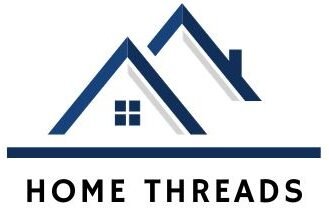Buying your first home is an exciting step, but let’s be honest—it can also feel like a lot to handle. From understanding your finances to choosing the right neighborhood, there’s a lot to consider.
If you’re a first-time buyer, you might have questions about where to start or how to avoid common mistakes. This guide will walk you through everything you need to know so you can approach the home-buying process with confidence.
Understanding Your Financial Picture
Before you start looking at houses, it’s important to take a close look at your financial situation. This includes assessing your income, monthly expenses, and how much you’ve saved for a down payment. Knowing these details helps you figure out how much house you can realistically afford.
A good place to start is by checking your credit score. Your credit score has a significant impact on the mortgage terms you’ll qualify for. A higher credit score can often get you better interest rates, which saves you money over time. If your credit needs improvement, focus on paying down debts and making on-time payments to build a stronger financial profile.
You’ll also want to research mortgage options and check current mortgage rates. Rates can vary depending on economic conditions and your financial profile. Staying updated on the latest rates will help you estimate your potential monthly payments and choose a loan that fits your budget.
Saving for Your Down Payment
Saving for a down payment is often one of the most challenging steps for first-time homebuyers. While a 20% down payment is ideal for many, there are loan programs, like FHA loans, that require as little as 3.5%. The exact amount you’ll need depends on the loan type and the home’s purchase price.
Setting up a separate savings account specifically for your down payment can help you monitor your progress more easily. Don’t forget to factor in closing costs as well, which usually range from 2% to 5% of the home’s price. These costs cover various fees, including appraisals, inspections, and necessary legal documents.
Getting Preapproved for a Mortgage
Once you’ve started saving and have a clear idea of your budget, the next step is to get pre-approved for a mortgage. Preapproval shows sellers that you’re a serious buyer and gives you a clearer picture of how much you can afford to spend.
To get preapproved, you’ll need to provide documentation such as tax returns, pay stubs, and bank statements. A verified preapproval letter can also give you a competitive edge when you’re ready to make an offer on a home. It’s a good idea to work with a lender who communicates clearly and answers your questions throughout the process.
Choosing the Right Neighborhood
The house itself is important, but the location is just as critical. Before you start house hunting, take some time to think about what you want in a neighborhood. Consider factors like commute times, school districts, and the availability of amenities like parks, grocery stores, and restaurants.
Visiting neighborhoods at various times throughout the day can give you a better understanding of the area’s vibe and activity levels. What feels lively and welcoming during the day might feel less appealing at night. If possible, talk to current residents to learn more about the community.
Creating a Must-Have List
Before starting your home tours, create a list that separates your “must-haves” from your “nice-to-haves.” This keeps you on track and prevents you from being sidetracked by non-essential features. Essentials might include things like the number of bedrooms, a location close to work, or a yard suitable for pets. On the other hand, “nice-to-haves” could be features such as an updated kitchen or a swimming pool.
Having a well-organized list simplifies the decision-making process, especially when you’re comparing several properties. It’s rare to find a home that meets every single criterion, so be ready to focus on your top priorities.
Finding the Right Real Estate Agent
A knowledgeable real estate agent can make a big difference in your home-buying experience. When choosing an agent, look for someone with experience in your target area. Ask friends or family for recommendations, and read online reviews to learn about other buyers’ experiences. The right agent should communicate well and be willing to answer your questions throughout the process.
Touring Homes and Making Offers
Touring homes is one of the most exciting parts of the home-buying journey. As you visit each property, keep your budget and must-have list in mind. Don’t be afraid to ask questions about the home’s history, condition, and any potential issues.
When you find a home you love, your agent will help you make an offer. Offers often include contingencies, such as passing a home inspection or securing financing. Contingencies protect you as a buyer, allowing you to renegotiate or back out if something unexpected arises.
Completing the Home Inspection
A home inspection is a crucial step to make sure there are no hidden problems with the property. Hire a licensed inspector to evaluate the home’s structure, plumbing, electrical systems, and more.
If the inspection reveals significant issues, you can negotiate repairs with the seller or, in some cases, choose not to proceed with the purchase. While inspections might seem like an extra expense, they can save you from costly surprises down the road.
Closing the Deal
The final step in the process is closing. During closing, you’ll sign the necessary documents to finalize the purchase and transfer ownership of the property. This is also when you’ll pay the down payment and closing costs.
Once the paperwork is complete, the lender will release the funds, and you’ll officially become a homeowner. Congratulations—you’ve reached the finish line!
Buying your first home might feel like a lot at first, but taking it step by step makes the process manageable. By preparing financially, staying organized, and working with the right professionals, you can approach homeownership with confidence. The effort you put in now will help you find a home that’s the right fit for you and your future.
Viste More: Home Threads







